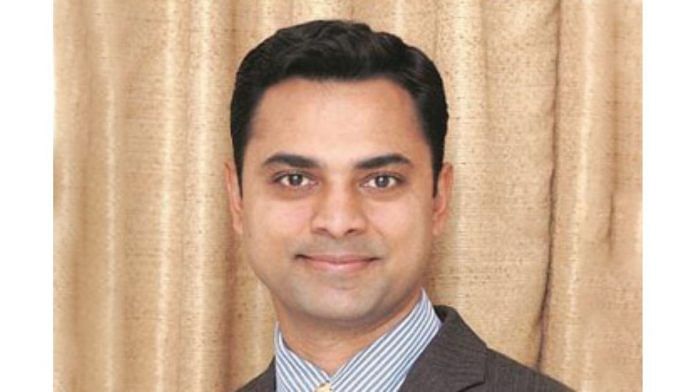New Delhi: In textbook economics, when central banks or a country’s monetary authority take steps to control inflation, it also intends to manage the supply of credit, but in real life, this link is not well established, said K.V. Subramanian, executive director at the International Monetary Fund (IMF) and former chief economic adviser to the Government of India.
The economist was in conversation with ThePrint Editor-in-Chief Shekhar Gupta and Deputy editor TCA Sharad Raghavan at an ‘Off The Cuff’ event Tuesday. He discussed the role of central banks across global economies and preconceived notions surrounding their functioning, especially in times of crisis.
While talking about his book ‘Money: A Zero-Sum Game’, co-authored with Krishnamurthy Vaidyanathan, faculty director at the Indian School of Business (ISB), said, “When the global financial crisis happened, both my co-author and I observed that central banks across the world pulled out bazookas, big instruments to stimulate the economy, increase lending etc. Almost one and half decade later and even during Covid, when the same bazookas were fired, what we see is that these have turned out to be damp squibs.”
The IMF executive director also reasoned that in macroeconomics, it is difficult to establish the direction of causality between two occurrences, although it is very important from a policy-making perspective that this relationship is established.
The conventional theory of financial intermediation, Subramanian explained, thinks of banks as mediators, taking liquid deposits and distributing illiquid loans, as if passing the parcel.
“The fundamental flaw in this is that banks are actually money creators, they are not just passing the parcel,” said Subramanian .
“The theory of financial intermediation thinks that you can only lend what you have,” he further explained. “But in real life, banks can lend much more than what they have. They assess the borrower’s ability to repay the loan. Once they grant the loan, the bank then credits the deposit in the lender’s account, which becomes the bank’s asset. So loans create deposits and not deposits create loans,” he said.
Failure to understand this concept has caused conflict between two key elements of financial management – the money supply and the monetary base. While money supply refers to the amount of cash in the economy, monetary base is the sum of this cash in the economy and the reserves held by all banks.
“Lending is essentially controlled by banks,” said the economist. “ You have 85 per cent of the money supply with commercial banks and a monetary base – which is the domain of the Reserve Bank of India – dancing to two different tunes completely. Monetary theory links the two in such a way that doesn’t work in real life.”
India’s digital currency
Subramanian also illustrated what a central bank digital currency – something that has generated a lot of interest since the RBI began its pilot projects on it – could mean.
“We need to distinguish between cryptocurrency and the CBDC (Central Bank Digital Currency),” he said. “Unlike the physical currency that we carry in our pockets, when we need to give money to somebody, CBDC is basically a digital currency issued by the central bank. In some way, it will be a part of the currency in circulation, and that is just the central bank keeping pace with digitisation,” said the former chief economic adviser to the Government of India.
When asked if the central bank will have to recalibrate its money management by balancing the amount of currency to be printed and issued in the digital format, Subramanian said, “Printing of currency is based on the demand for currency. Depending on how they see the demand for the digital money (the CBDC), they will print. In some way, they are substitutes to each other.”
This heavy-on-economics ‘Off The Cuff’ episode however ended on a musical note. Towards the end of the show, the economist regaled listeners by singing Kishore Kumar and Mohammad Rafi classics.

Also read: Concentrating on just EVs in India not an apt solution, says Maruti chairman R C Bhargava



